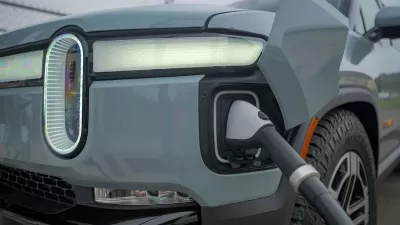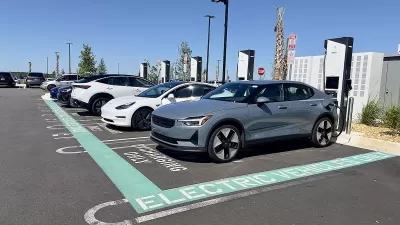The state secured over $70 million in federal funding to design and build out an electric vehicle charging network in a state with often vast distances between destinations.

The Arizona Department of Transportation is gearing up to boost the state’s growing electric vehicle charging network, with $76.5 million in federal funds coming the state’s way over the next three years. As of 2021, Arizona had 1,952 public charging ports, compared to California’s 34,185.
According to Hailey Forbis of KTAR, the state’s plan “calls for electrical vehicle charging stations to be placed either upgraded existing stations and eventually new stations no more than 50 miles apart initially on the interstate system in Arizona,” according to an ADOT spokesperson. Two exceptions are stations in Interstate 8 and Interstate 40 that would be 70 miles apart.
Addressing concerns about straining the power grid, “Nick, the ADOT spokesperson, said Arizona’s major power producers have been brought into the conversation to make sure there will be ample power as transportation electrifies.”
FULL STORY: Driving an electric vehicle in Arizona doesn’t need to cause range anxiety

Alabama: Trump Terminates Settlements for Black Communities Harmed By Raw Sewage
Trump deemed the landmark civil rights agreement “illegal DEI and environmental justice policy.”

Planetizen Federal Action Tracker
A weekly monitor of how Trump’s orders and actions are impacting planners and planning in America.

The 120 Year Old Tiny Home Villages That Sheltered San Francisco’s Earthquake Refugees
More than a century ago, San Francisco mobilized to house thousands of residents displaced by the 1906 earthquake. Could their strategy offer a model for the present?

Indy Neighborhood Group Builds Temporary Multi-Use Path
Community members, aided in part by funding from the city, repurposed a vehicle lane to create a protected bike and pedestrian path for the summer season.

Congestion Pricing Drops Holland Tunnel Delays by 65 Percent
New York City’s contentious tolling program has yielded improved traffic and roughly $100 million in revenue for the MTA.

In Both Crashes and Crime, Public Transportation is Far Safer than Driving
Contrary to popular assumptions, public transportation has far lower crash and crime rates than automobile travel. For safer communities, improve and encourage transit travel.
Urban Design for Planners 1: Software Tools
This six-course series explores essential urban design concepts using open source software and equips planners with the tools they need to participate fully in the urban design process.
Planning for Universal Design
Learn the tools for implementing Universal Design in planning regulations.
Clanton & Associates, Inc.
Jessamine County Fiscal Court
Institute for Housing and Urban Development Studies (IHS)
City of Grandview
Harvard GSD Executive Education
Toledo-Lucas County Plan Commissions
Salt Lake City
NYU Wagner Graduate School of Public Service





























